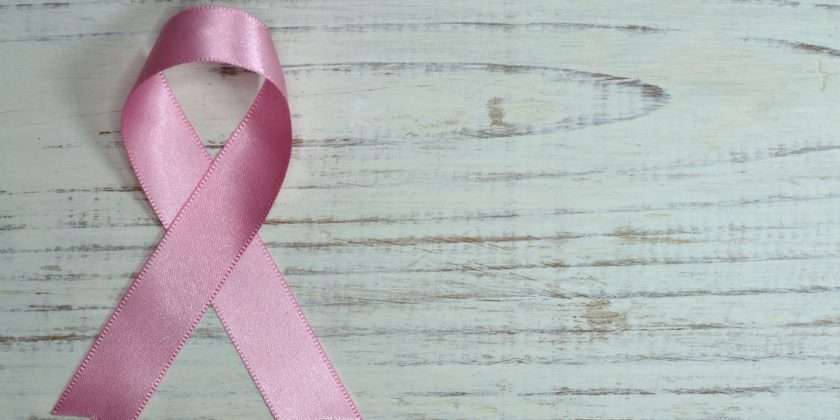Breast cancer is the second most common cancer1 in women after skin cancer. Mammograms can detect breast cancer early, possibly before it has spread. To prevent new cancers from starting, scientists look at risk factors and protective factors. Anything that increases your chance of developing cancer is called a cancer risk factor; anything that decreases your chance of developing cancer is called a cancer protective factor. This post “8 Protective & Non-Protective Factors for Breast Cancer” seeks to provide helpful information about this disease.
What Are the Risk Factors for Breast Cancer?
Studies have shown that your risk for breast cancer is due to a combination of factors. The main factors that influence your risk include being a woman and getting older. Most breast cancers are found in women who are 50 years old or older.
Risk Factors You Cannot Change2
- Getting older. The risk for breast cancer increases with age; most breast cancers are diagnosed after age 50.
- Genetic mutations. Inherited changes (mutations) to specific genes, such as BRCA1 and BRCA2. Women who have inherited these genetic changes are at higher risk of breast and ovarian cancer.
- Reproductive history. Early menstrual periods before age 12 and starting menopause after age 55 expose women to hormones longer, raising their risk of getting breast cancer.
- Having dense breasts. Dense breasts have more connective tissue than fatty tissue, which can sometimes make it hard to see tumors on a mammogram. Women with dense breasts are more likely to get breast cancer.
- Personal history of breast cancer or certain non-cancerous breast diseases. Women who have had breast cancer are more likely to get breast cancer a second time. Some non-cancerous breast diseases such as atypical hyperplasia or lobular carcinoma in situ are associated with a higher risk of getting breast cancer.
- Family history of breast cancer. A woman’s risk for breast cancer is higher if she has a mother, sister, or daughter (first-degree relative) or multiple family members on either her mother’s or father’s side of the family who has had breast cancer. Having a first-degree male relative with breast cancer also raises a woman’s risk.
- Previous treatment using radiation therapy. Women who had radiation therapy to the chest or breasts (like for treatment of Hodgkin’s lymphoma) before age 30 have a higher risk of getting breast cancer later in life.
- Women who took the drug diethylstilbestrol (DES), which was given to some pregnant women in the United States between 1940 and 1971 to prevent miscarriage, have a higher risk. Women whose mothers took DES while pregnant with them are also at risk.
Risk Factors You Can Change

- Not being physically active. Women who are not physically active have a higher risk of getting breast cancer.
- Being overweight or obese after menopause. Older women who are overweight or obese have a higher risk of getting breast cancer than those at a normal weight.
- Taking hormones. Some forms of hormone replacement therapy (those that include both estrogen and progesterone) taken during menopause can raise the risk for breast cancer when taken for more than five years. Certain oral contraceptives (birth control pills) also have been found to increase breast cancer risk.
- Reproductive history. Having the first pregnancy after age 30, not breastfeeding, and never having a full-term pregnancy can raise breast cancer risk.
- Drinking alcohol. Studies show that a woman’s risk for breast cancer increases with the more alcohol she drinks.
Research suggests that other factors such as smoking, being exposed to chemicals that can cause cancer, and changes in other hormones due to night shift working also may increase breast cancer risk.
The following are protective factors for breast cancer:
Less exposure of breast tissue to estrogen made by the body
Decreasing the length of time a woman’s breast tissue is exposed to estrogen may help prevent breast cancer. Exposure to estrogen is reduced in the following ways:
- Early pregnancy: Estrogen levels are lower during pregnancy. Women who have a full-term pregnancy before age 20 have a lower risk of breast cancer than women who have not had children or who give birth to their first child after age 35.
- Breast-feeding: Estrogen levels may remain lower while a woman is breast-feeding. Women who breastfed have a lower risk of breast cancer than women who have had children but did not breastfeed.
Taking estrogen-only hormone therapy after hysterectomy, selective estrogen receptor modulators, or aromatase inhibitors and inactivators
3. Estrogen-only hormone therapy after hysterectomy
Hormone therapy with estrogen-only may be given to women who have had a hysterectomy. In these women, estrogen-only therapy after menopause may decrease the risk of breast cancer. There is an increased risk of stroke and heart and blood vessel disease in postmenopausal women who take estrogen after a hysterectomy.
4. Selective estrogen receptor modulators
Tamoxifen and raloxifene belong to the family of drugs called selective estrogen receptor modulators (SERMs). SERMs act like estrogen on some tissues in the body but block the effect of estrogen on other tissues.
Treatment with tamoxifen lowers the risk of estrogen receptor-positive (ER-positive) breast cancer and ductal carcinoma in situ in premenopausal and postmenopausal women at high risk. Treatment with raloxifene also lowers the risk of breast cancer in postmenopausal women. With either drug, the reduced risk lasts for several years or longer after treatment is stopped. Lower rates of broken bones have been noted in patients taking raloxifene.

Taking tamoxifen increases the risk of hot flashes, endometrial cancer, stroke, cataracts, and blood clots (especially in the lungs and legs). The risk of having these problems increases markedly in women older than 50 years compared with younger women. Women younger than 50 years who have a high risk of breast cancer may benefit the most from taking tamoxifen. The risk of having these problems decreases after tamoxifen is stopped. Talk with your doctor about the risks and benefits of taking this drug.
Taking raloxifene increases the risk of blood clots in the lungs and legs, but does not appear to increase the risk of endometrial cancer. In postmenopausal women with osteoporosis (decreased bone density), raloxifene lowers the risk of breast cancer for women who have a high or low risk of breast cancer. It is not known if raloxifene would have the same effect in women who do not have osteoporosis. Talk with your doctor about the risks and benefits of taking this drug.
Other SERMs are being studied in clinical trials.
5. Aromatase inhibitors and inactivators
Aromatase inhibitors (anastrozole, letrozole) and inactivators (exemestane) lower the risk of recurrence and of new breast cancers in women who have a history of breast cancer. Aromatase inhibitors also decrease the risk of breast cancer in women with the following conditions:
- Postmenopausal women with a personal history of breast cancer.
- Women with no personal history of breast cancer who are 60 years and older, have a history of ductal carcinoma in situ with mastectomy or have a high risk of breast cancer based on the Gail model tool (a tool used to estimate the risk of breast cancer).
In women with an increased risk of breast cancer, taking aromatase inhibitors decreases the amount of estrogen made by the body. Before menopause, estrogen is produced by the ovaries and other tissues in a woman’s body, including the brain, fat tissue, and skin. After menopause, the ovaries stop making estrogen, but the other tissues do not. Aromatase inhibitors block the action of an enzyme called aromatase, which is used to make all of the body’s estrogen. Aromatase inactivators stop the enzyme from working.
Possible harms from taking aromatase inhibitors include muscle and joint pain, osteoporosis, hot flashes, and feeling very tired.
6. Risk-reducing mastectomy
Some women who have a high risk of breast cancer may choose to have a risk-reducing mastectomy (the removal of both breasts when there are no signs of cancer). The risk of breast cancer is much lower in these women, and most feel less anxious about their risk of breast cancer. However, it is crucial to have a cancer risk assessment and counseling about different ways to prevent breast cancer before making this decision.

7. Ovarian ablation
The ovaries make most of the estrogen that is made by the body. Treatments that stop or lower the amount of estrogen made by the ovaries include surgery to remove the ovaries, radiation therapy, or taking certain drugs. This is called ovarian ablation.
Premenopausal women who have a high risk of breast cancer due to certain changes in the BRCA1 and BRCA2 genes may choose to have a risk-reducing oophorectomy (the removal of both ovaries when there are no signs of cancer). This decreases the amount of estrogen made by the body and lowers the risk of breast cancer. Risk-reducing oophorectomy also reduces the risk of breast cancer in normal premenopausal women and women with an increased risk of breast cancer due to radiation to the chest. However, it is very important to have a cancer risk assessment and counseling before making this decision. The sudden drop in estrogen levels may cause the symptoms of menopause to begin. These include hot flashes, trouble sleeping, anxiety, and depression. Long-term effects include decreased sex drive, vaginal dryness, and decreased bone density.
8. Getting enough exercise
Women who exercise four or more hours a week have a lower risk of breast cancer. The effect of exercise on breast cancer risk may be greatest in premenopausal women who have normal or low body weight.
It is not clear whether the following affect the risk of breast cancer:
Hormonal contraceptives
Hormonal contraceptives contain estrogen or estrogen and progestin. Some studies have shown that women who are current or recent users of hormonal contraceptives may have a slight increase in breast cancer risk. Other studies have not demonstrated an increased risk of breast cancer in women using hormonal contraceptives.
In one study, the risk of breast cancer slightly increased the longer a woman used hormonal contraceptives. Another study showed that a slight increase in breast cancer risk decreased over time when women stopped using hormonal contraceptives.
More studies are needed to know whether hormonal contraceptives affect a woman’s risk of breast cancer.
Environment

Studies have not proven that being exposed to certain substances in the environment, such as chemicals, increases the risk of breast cancer.
Studies have shown that some factors have little or no effect on the risk of breast cancer.
The following have little or no effect on the risk of breast cancer:
- Having an abortion.
- Making diet changes, such as eating less fat or more fruits and vegetables.
- Taking vitamins, including fenretinide (a type of vitamin A).
- Cigarette smoking, both active and passive (inhaling secondhand smoke).
- Using underarm deodorant or antiperspirant.
- Taking statins (cholesterol-lowering drugs).
- Taking bisphosphonates (drugs used to treat osteoporosis and hypercalcemia) by mouth or by intravenous infusion.
- Changes in your circadian rhythm (physical, mental, and behavioral changes that are mainly affected by darkness and light in 24-hour cycles), which may be affected by working night shifts or the amount of light in your bedroom at night.
Breast Cancer Screening Recommendations
The United States Preventive Services Task ForceExternal (USPSTF) is an organization made up of doctors and disease experts who look at research on the best way to prevent diseas

es and make recommendations on how doctors can help patients avoid diseases or find them early.
The USPSTFExternal recommends that women who are 50 to 74 years old and are at average risk for breast cancer get a mammogram every two years. Women who are 40 to 49 years old should talk to their doctor or other health care professional about when to start and how often to get a mammogram. Women should weigh the benefits and risks of screening tests when deciding whether to begin getting mammograms before age 50.
Breast Cancer Screening Tests
Mammogram
A mammogram is an X-ray of the breast. Mammograms are the best way to find breast cancer early when it is easier to treat, and before it is big enough to feel or cause symptoms. Having regular mammograms can lower the risk of dying from breast cancer. At this time, a mammogram is the best way to find breast cancer for most women.
Breast Magnetic Resonance Imaging (MRI)
A breast MRI uses magnets and radio waves to take pictures of the breast. MRI is used along with mammograms to screen women who are at high risk for getting breast cancer. Because breast MRIs may appear abnormal even when there is no cancer, they are not used for women at average risk.
Other Exams
Clinical Breast Exam
A clinical breast exam is an examination by a doctor or nurse, who uses his or her hands to feel for lumps or other changes.
Breast Self-Awareness
Being familiar with how your breasts look and feel can help you notice symptoms such as lumps, pain, or changes in size that may be of concern. These could include changes found during a breast self-exam. You should report any changes that you notice to your doctor or health care provider.
Having a clinical breast exam or doing a breast self-exam has not been found to lower the risk of dying from breast cancer.
Some women will get breast cancer even without any other risk factors that they know of. Having a risk factor does not mean you will get the disease, and not all risk factors have the same effect. Most women have some risk factors, but most women do not get breast cancer. If you have breast cancer risk factors, talk with your doctor about ways you can lower your risk and about screening for breast cancer.
Jay Harold hopes you enjoyed this post, “This post “8 Protective & Non-Protective Factors for Breast Cancer” seeks to provide helpful information about this disease.” Please Share it and read more about Jay Harold here. Please take this advice from Muhammad Ali and give back to others. “Service to others is the rent you pay for your room here on earth.”
Bibliography
- https://www.cdc.gov/cancer/breast/basic_info/screening.htm
- https://www.cdc.gov/cancer/breast/basic_info/risk_factors.htm




